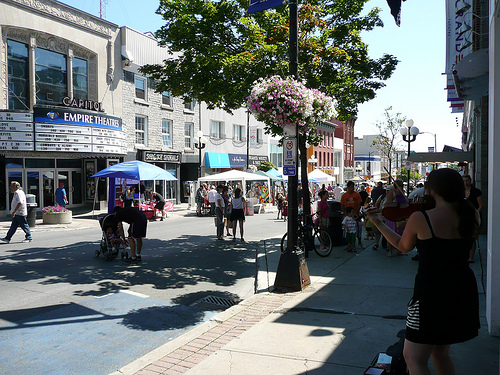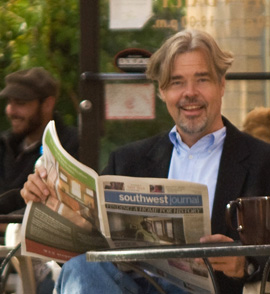I love big cities—no matter what size they are.
Urbaneness is not measured just by population and square mileage. The “big” in big city refers to the exhilarating sense that life is flowering all around us in countless varieties.
We can all name a couple of million-plus towns that fall woefully short in pleasure and pizzazz; places that fit novelist Gertrude Stein’s brilliantly barbed phrase about her hometown of Oakland: There’s no there there. (Although Oakland and the East Bay have enlivened themselves considerably in recent years, showing that no place can be eternally condemned as dull.)
Meanwhile some of the most sophisticated, energetic, enjoyable spots I know (and which I visit as frequently as time and money allow)don’t top 275,000 in a head count. Madison, Wisconsin. Freiburg, Germany. Charleston, South Carolina. Ljubljana, Slovenia. Ithaca, New York. Zihuatanejo, Mexico. Boulder, Colorado.
And others are teenier that that. Iowa City (62,000). Burlington, Vermont (38,000). Lansing, Iowa (1012). Lanesboro, Minnesota (788). Bayfield, Wisconsin (611). But these towns all fill me with a sense of wonder as I stroll the streets, poke into the shops, and watch the people. Most I’ve gotten to know simply through proximity and the patterns of my own travels, so I’m sure you have your own favorites.
A sidetrip on a recent journey out East added another to my list of small “big” cities I’m eager to visit again—Kingston, Ontario (117,000), which commands a scenic spot where Lake Ontario suddenly bursts westward beyond the banks of the St. Lawrence River.
It was once Canada’s capital under British rule, and refuses to surrender the idea that it’s a place of importance. This stubborn streak of local pride (the foremost factor in making a great city) results in a rich endowment of historical character. Besides a downtown that would fit a city seven times Kingston’s size, the town is brimming filled with grand mansions and humble cottages in limestone or intricate Victorian brickwork.
Yet Kingston feels more like an art gallery than a history museum—a place where gradual, thoughtful urban evolution has prevailed over both the wrecking ball and fussy preservation. Its 19th Century charm is enhanced by the verve of a college town, the festiveness of a tourist town and the worldliness of a port town.
The star urban attraction is Princess Street, a classic shopping avenue that runs the gamut from tempting boutiques and bistros near the downtown waterfront to interestingly seedy rock clubs and ethnic food sands a mile away near the Queens University campus. Other hotspots are a series of lakefront parks a farmers market that has been held for almost 200 years in the same spot right behind the ornate city hall.
To get a feel for the place, try to imagine West Point, Alcatraz, Newport and the Ivy League rolled into one—it’s the home of Canada’s major military academy, oldest maximum security prison, a sailing center built for the 1976 Olympics and a venerable university. In fact, the local sailing scene centers around Portsmouth Olympic Harbour which is just just a few yards from the walls and guard towers of Kingston Penitentiary.
That’s what’s most appealing in great cities of all kinds—the colorful, creative juxtapositions that heighten our sense of being alive.
That’s what’s most appealing in great cities of all kinds—the colorful, creative juxtapositions that heighten our sense of being alive.









